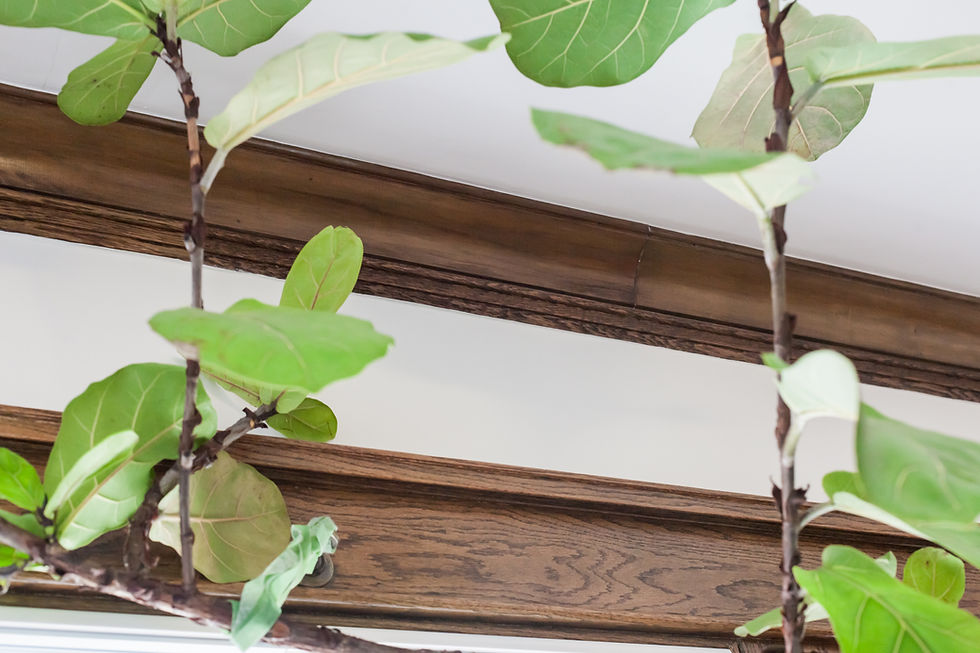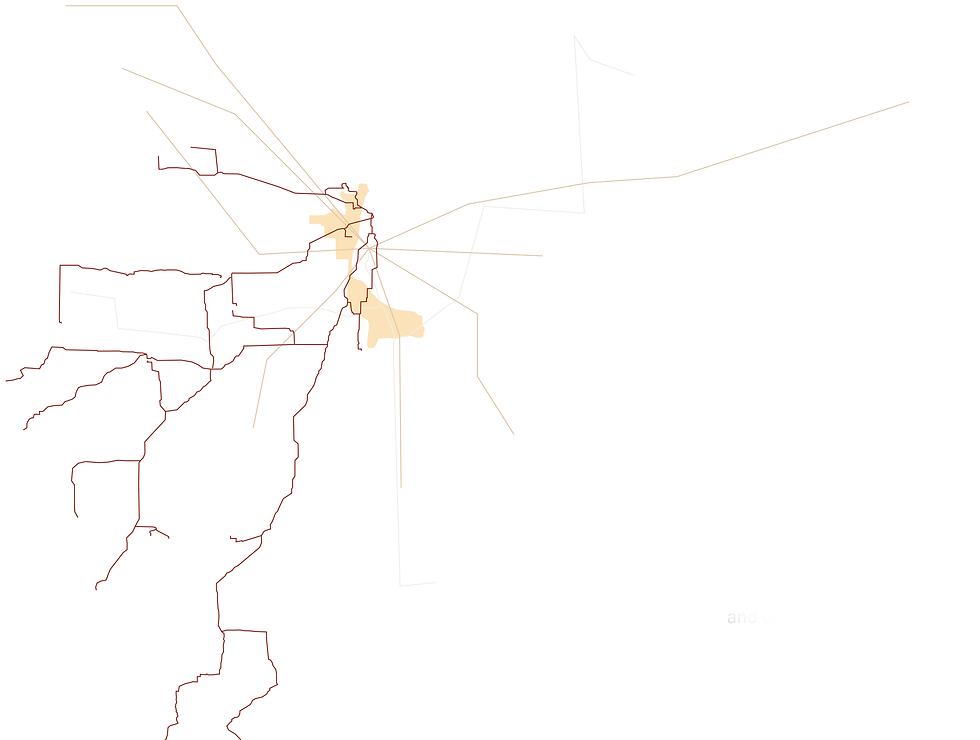Tracing Your Bungalow's Wood, Water, and More!
- Sarah Dezember
- Sep 1, 2020
- 4 min read
Updated: Oct 12, 2022
If you’ve been following along in our journey to uncover this history of your bungalow’s building materials, you’ve come to the final stop! Today we’re going to be taking a look at one of the most important building materials: wood.

Wood
When we think about where wood is used in our homes, we will likely immediately think of our cherished wood floors. Next, we might think about the framing of our walls. But, there’s so much more to wood than you think.
Wood is the largest volume of material used in the construction of your bungalow. Wood frameworks are used to shape the bricks of your bungalow’s facade. It’s used to create a temporary frame for your basement or foundation that is then filled with concrete. It’s used to hold up your interior walls which are then covered with plaster. Wood is everywhere.
So, where is all this wood coming from? As we’ve discovered, it’s almost impossible to know for sure but we’re going to try and find out!
Because we had so badly depleted our regional forests in the early 20th century, there’s a pretty good chance that instead of traveling around 420 miles, the wood for your bungalow actually traveled around 2,000 miles (or more!) from the Pacific Northwest.

Wood has always been a precious resource. It’s used to start the fires that cook our food and keep us warm. It’s what gave us ships and allowed humans to explore and discover, and it sparked global trade. It’s what gives us shelter. Because of wood’s vital importance, England suffered from the effects of deforestation as early as 1540. This caused England to turn to the United States, setting off the beginning of one of the largest industries in America that still exists to this day.
By 1790, New England became one of the leading suppliers of lumber for Britain and was exporting 36 million feet of pine boards annually, with a bulk of that wood coming from Massachusetts. Less than fifty years later, Maine would become the world’s largest shipping port, exporting more than 8.7 billion feet of wood over the next sixty years.
Lumber production continued to push west in search of dense forests to replace the depleted ones. For much of the 1800s, lumber was considered one of Chicago’s greatest commodities because of the city’s proximity to the dense forests in the Upper Great Lakes area. Lumber flowed through Chicago and onto the rest of the world through the Illinois & Michigan Canal.

By 1910, when bungalows began to pop up in Chicago, the city’s lumber industry had already come and gone. Forests in the Upper Great Lakes region had been exhausted. Again, it was time to move further west in search of more lumber.

Because we had so badly depleted our regional forests in the early 20th century, there’s a pretty good chance that instead of traveling around 420 miles, the wood for your bungalow actually traveled around 2,000 miles (or more!) from the Pacific Northwest. In 1910, Idaho took over the lead in lumber production, distributing 745 million board feet nationally. Less than 15 years later that lead was relinquished to lumber production companies in Washington and Oregon.
Water might be the most important element needed to make your house, but it’s also the most invisible and ignored.
Water
The material that is by far the most overlooked and critical to the construction of your house is water. Water is used in the manufacturing of all of the materials we’ve covered in this blog series.
It’s the melted glacier that produced the clay that makes our bricks.
It’s the prehistoric seas that once covered Illinois leaving behind limestone, shale, and gypsum that makes our concrete and plaster.
It’s the rivers and the lakes that transported these materials to Chicago to make your house.
It’s both extracted and added to manufacture those minerals into materials.
It’s also the most difficult to understand in terms of where it is being sourced from, and it’s almost impossible to quantify just how much was actually needed to make your bungalow. Water might be the most important element needed to make your house, but it’s also the most invisible and ignored.
With a little bit of detective work, we can begin to expand the boundaries of our Bungalow Belt by better understanding where these materials were most likely coming from.
Other Materials
While brick, concrete, wood, and plaster tend to make up the majority of materials used in your bungalow, this is by no means an exhaustive list of materials. Windows are of course made of glass, but many Chicago bungalows also boasted some traditionally leaded glass. Metal is used for your door handles, hinges, locks, window weights, and chains. And let’s not forget all the nails, screws, or ties that hold everything in place.

It is no easy task to trace the lineage of your bungalow’s materials. But, with a little bit of detective work, we can begin to expand the boundaries of our Bungalow Belt by better understanding where these materials were most likely coming from.
Honoring Materials and Preserving their History

All of this is to say that your bungalow did not appear out of nowhere. And while it’s almost impossible to understand the total volume of materials, miles traveled, and hours of work it took to create your bungalow or the 80,000 other bungalows in Chicago’s Bungalow Belt, it’s important to try.
Every inch of your house tells a unique story about our earth’s geology. Every brick, block, wood beam in the walls and in the floorboards is a result of the world transforming over millions of years. We have a responsibility to learn and preserve those stories for future generations.
This exercise is hopefully only the beginning of your journey to discover more about your bungalow. What will you uncover?
Sarah Dezember is currently pursuing her Masters in Architecture with an emphasis in Interior Architecture from the School of the Art Institute of Chicago. In this blog series, she uncovers the hidden histories of materials used in our bungalows to help us understand what’s at the heart of our homes.









Comments